Remembering Your ‘A’ Game
A 2003 Saturn L300 came in with CAN BUS communication problems producing codes U1000 and a U2105 (Figure 1). U1000 is a Class II Data Link code. One explanation given for this code by GM is that should this code be set in history with other DTCs set in “current or history,” to diagnose these codes or code first. This means DTC U2105 could be the cause of code U1000 and will need to be diagnosed and resolved first. It is learned that code U2105 will set if the BCM or TCM lost CAN communications with the ECM.

Saturn VT25-E Ratio Error
A 2005 Saturn Vue experiences erratic ratio control (gear position) and ultimately sets a trouble code P1882. Once the code is cleared, the transmission starts to shift again, for a short time. The code then reappears and the unit returns to a fixed gear position.
After it was determined that the issue was not computer related or valve-body/solenoid related, the transmission was removed and disassembled. Damage was found in the drive variator (pulley), and there also was seal damage.
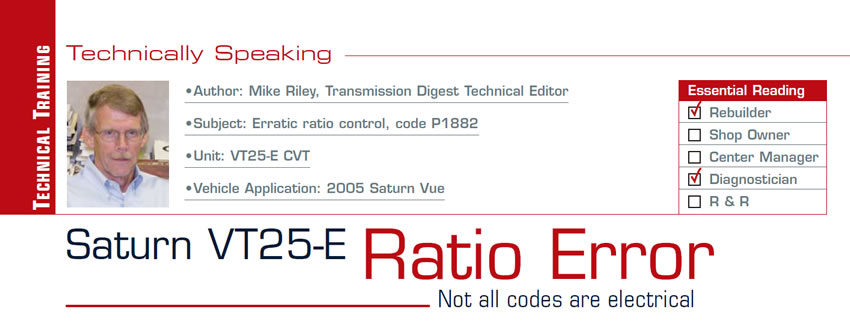
Unlocking Some 55-50 Valve-Body Mysteries
Let’s start with identifying the AW 55-50 valve body and the differences that matter when you’re choosing a replacement valve body. There are four castings, which can be identified by either a letter cast into the valve body just to the right of the S4 solenoid or a blank spot.
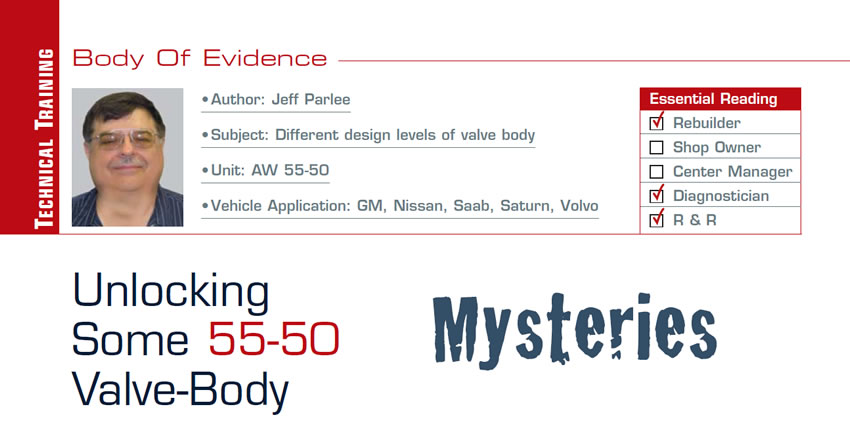
Let’s Talk about Adaptive Shift Strategy
The 604 was the first American computer-controlled transmission with adaptive shift strategy. The relearn process was not much different from what it is for today’s transmissions. For those of you who were not in the transmission industry back then, there was no quick-learn procedure for the 604. The quick-learn feature was not available until the mid-’90s. You actually had to drive the car at different throttle openings to relearn the shift adapts, and it could take 30 minutes or more of driving time to get it right.
Deal with High Current and Intermittent Failures
Tips for troubleshooting intermittent failures and no-starts
What is your knee-jerk reaction when a vehicle rolls into your bay with the following concern: intermittent no-start? Personally, I usually like to know the make and model of the vehicle so I can tag it with a pattern-case failure (and I will revisit this point a little later), but this can often lead me to dangerous and time-wasting conclusions.
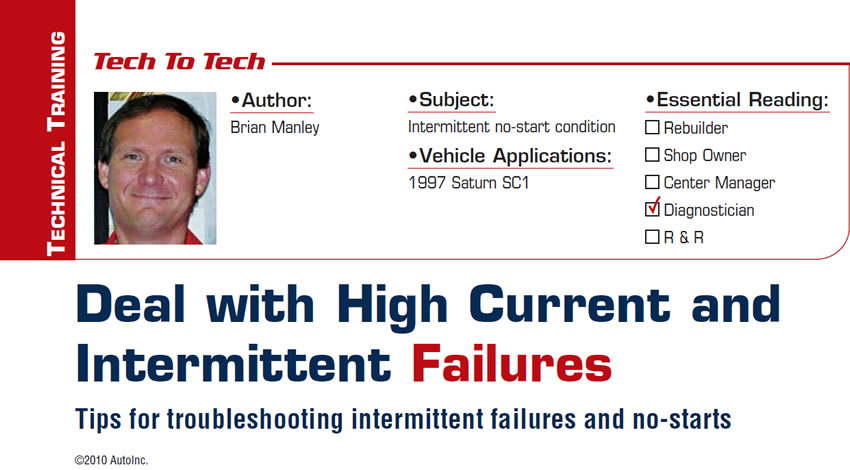
Double Trouble
Electronic failure can be very similar to a mechanical failure in that when one thing goes wrong, it can cause another part to fail. If you are not careful, you could make a repair that doesn’t fix the original cause of the failure, leading to a repeat failure after repairs.
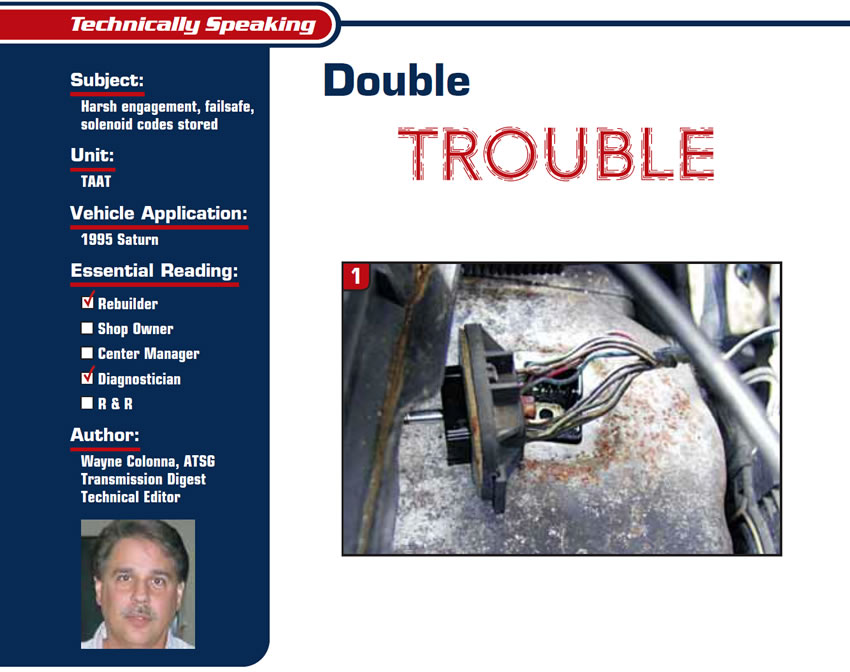
TAAT Reverse Issues
A Saturn with the TAAT comes into your shop with a delay, slip/bang or no reverse at all. What is the first thing you do? Get a valve body. It’s always the valve body. The only thing that goes wrong with a TAAT unit is the valve body. We can do this in an hour or so.
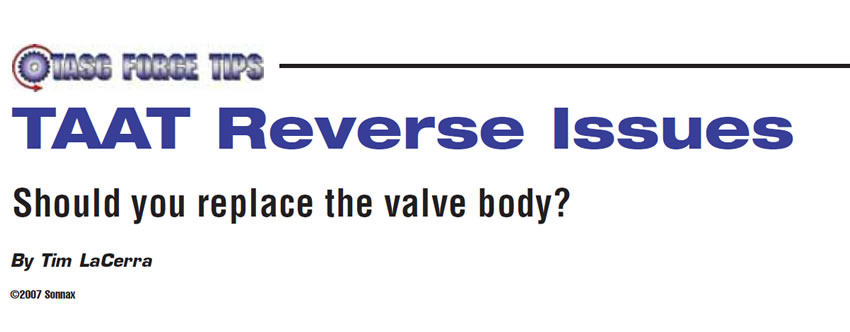
Say Cheese
I ran across an interesting code the other day. A guy called in to the ATSG help line and said, ”I have a 1999 Saturn SC2 with a code P1624.
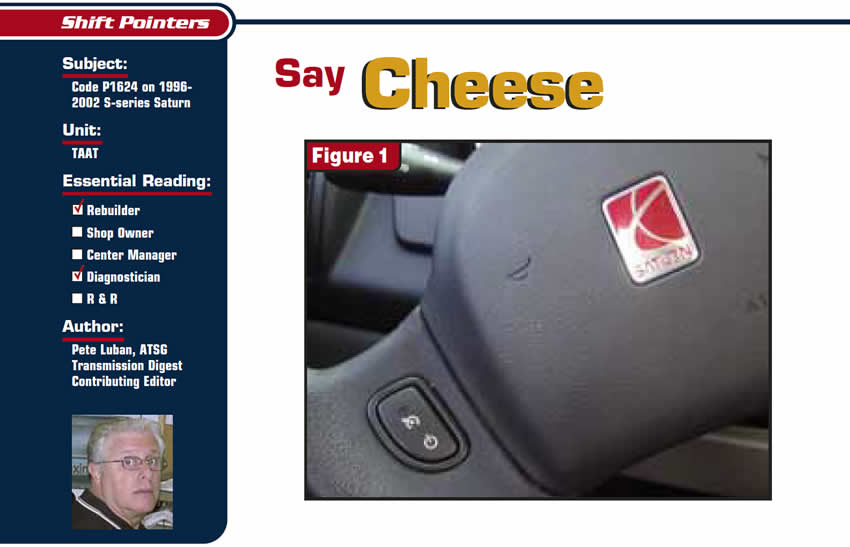
Point of Vue
I happened to be looking through some newly received factory bulletins from GM and came across an interesting one concerning the Saturn Vue and Ion. These models that are equipped with the AF33/23-5 five speed automatic have been around since 2002.
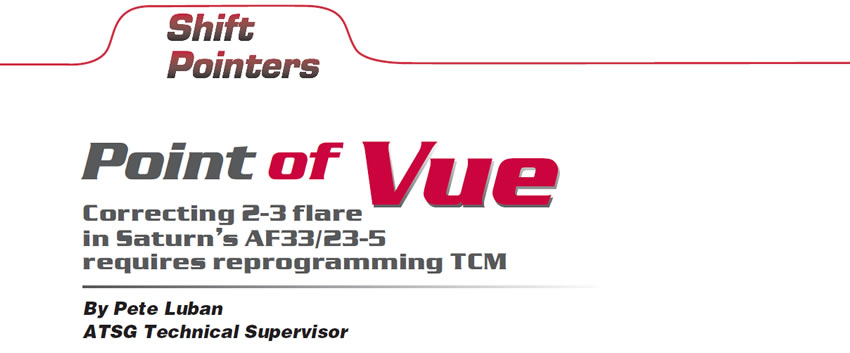
Orbiting the World of Saturn’s CVT
The VT20/25-E CVT transaxle, otherwise known simply as VTi, is a transmission built in the Fiat GM Powertrain Plant in Hungary and is on the road in the United States in Saturn’s Vue SUV and in the Ion Quad Coupe.
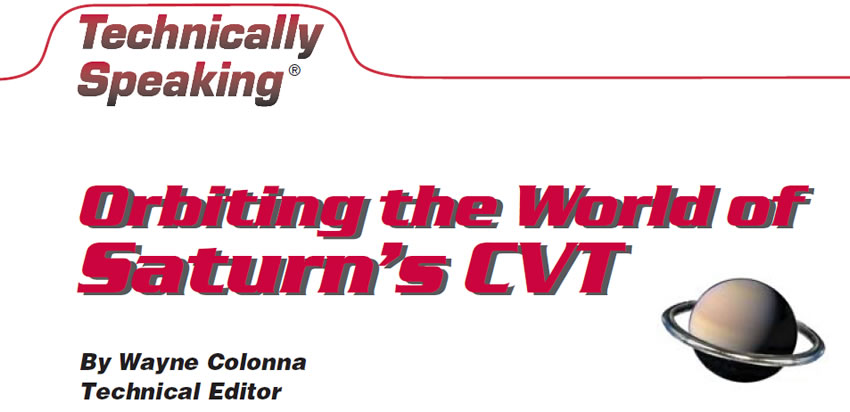
Orbiting Saturn
The problem here is in the assembly of the 1st-clutch drum. At first glance, all four of the piston-return-spring assemblies look identical (see Figure 1). Each caged assembly contains 16 springs and has an average overall height of 1.170 inches. The size and configuration of the spring cage allow for these assemblies to be interchanged among drums.

